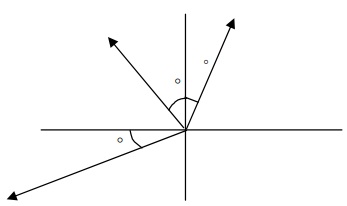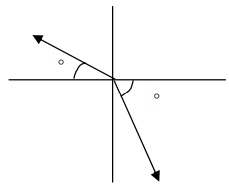Assignment:
Problems:
1) Given three vectors; F1 = 35, F2 = 40, F3 = 80 (see the diagram for the angles), find the resultant vector of all three using the component method.

2) Repeat Problem 1 using unit vectors. Make sure you write out each vector using unit vectors first and show ALL of your work.
3) Using the vectors F1 and F2 from Problem 1, find the following, leaving your answers in unit vector notation.
a) F1 - F2
b) 2F2 - F1
c) F1 + F2
d) F2F1
e) F2 (F1 + F2) / F1
4) For the vector A = - 8j + 4k, find its magnitude and direction. Also state in what plane the vector resides.
5) Given the vector: A = 3i + 4j, find any three vectors B that also lie in the xy plane and have the property that A = B but A ≠ B. Write out these vectors with unit vector notation.
6) Given two vectors; S = 2.5, R = 4.2, (see the diagram for the angles), find the dot product using (a) the magnitudes and (b) unit vector notation.

7) Calculate the angle between the two vectors given by: b = 3i - 2j - 8k , c = i - 5j + 4k.
8) Determine if the following vectors are perpendicular to each other.
a) P = 3i - 2j + k , Q = 4i + 9j + 6k.
b) D = i + 2j - 5k , F = 2i - 7j + k.
9) Determine the vector product of each set of vectors.
a) P = 3i - 2j + k , Q = 4i + 9j + 6k.
b) D = i + 2j - 5k , F = 2i - 7j + k.